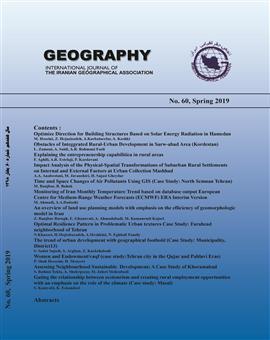Obstacles of Integgrated Rural-Urban Development in Sarw-abad Area (Kordestan)
Subject Areas :loghman zamani 1 , ِAbaas Saidi 2 , Abdolreza Rahmani Fazli 3
1 -
2 -
3 -
Keywords: Development Obstacles, Rural-Urban Integrated Development, Spatial System, Sarwabad Area,
Abstract :
Integrated development, in the sense of comprehensive approach to the logical integrity of spatial-temporal connections between sectors in environmental, economic, social, and physical planning procedures, emphasizes in fect, on the active participation of the people and unified management of areas. In addition, it focuses on the effective interaction between rural and urban areas, as otherwise it would be neither in favor of rural centers nor supporting urban centers. So, despite its outstanding capabilities, the Sarwabad’s spatial system was unable to achieve the goals of a desirable and integrated rural-urban development, lacking unified structural-functional planning. This article deals with the Sarwabad Area (including two cities of Sarwabad and Oraman-Takht and villages of the area). With regard to the integrated approach to rural-urban development, based on a comprehensive empirical field research, the paper has pursued the analysis and definition of the constraints of rural-urban development. The results show that, although there is a direct and significant relation between socio-cultural and physical-spatial indices, the security, economic and physical-ecological variables have the lowest correlation and the spatial flows have a medium link with the characteristics of integrated development. Therefore, As a result, integrated rural-urban development, as expected, has not been materialized.
